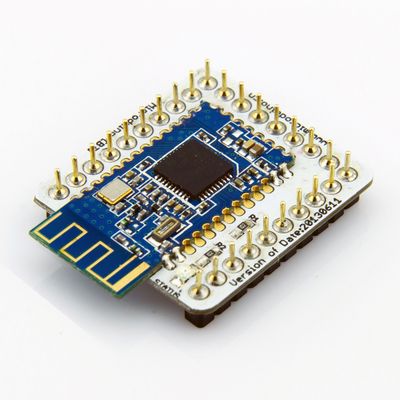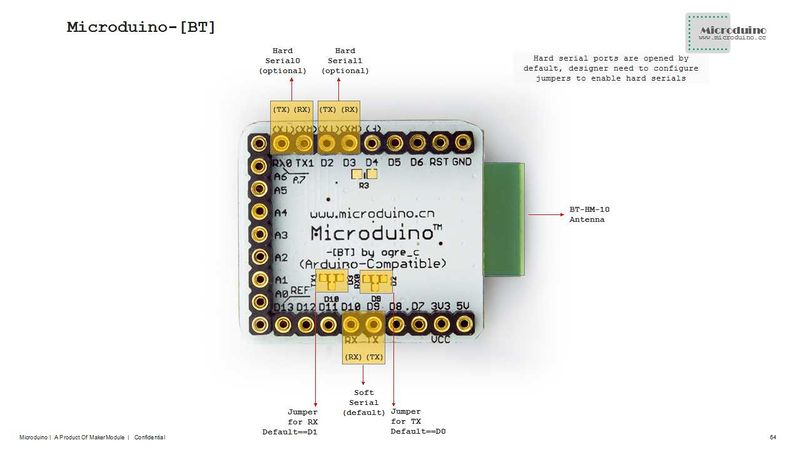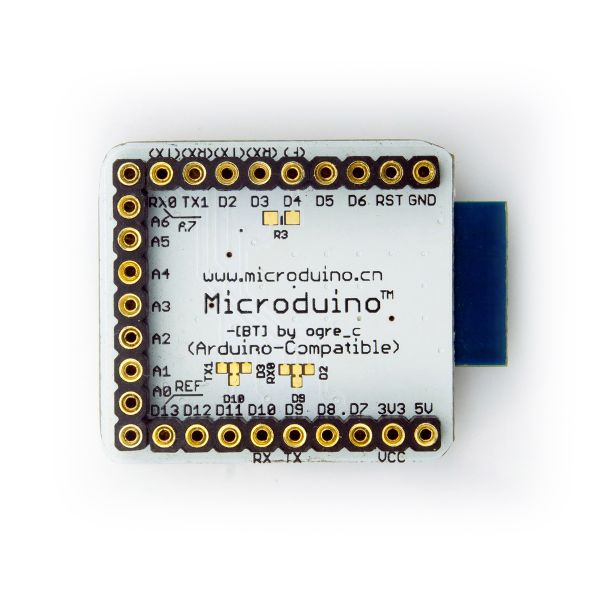Difference between revisions of "Microduino-【BT】"
(→Pictures) |
|||
| Line 2: | Line 2: | ||
|- | |- | ||
| | | | ||
| − | [[file:Microduino-bt-rect.jpg|400px|thumb|right|Microduino-【BT】]] | + | [[file:Microduino-bt -rect.jpg|400px|thumb|right|Microduino-【BT】]] |
'''[[Microduino-【BT】]]''' module is a plug-in device that supports Bluetooth 4.0 low energy standard. | '''[[Microduino-【BT】]]''' module is a plug-in device that supports Bluetooth 4.0 low energy standard. | ||
| Line 35: | Line 35: | ||
* Operating temperature: - 10oC to 60oC | * Operating temperature: - 10oC to 60oC | ||
| − | :[[file:Microduino-BT-1. | + | :[[file:Microduino-BT-1.jpg|800px|thumb|center|Microduino-BT]] |
<br style="clear: left"/> | <br style="clear: left"/> | ||
| − | :[[file:Microduino-BT-2. | + | :[[file:Microduino-BT-2.jpg|800px|thumb|center|Microduino-BT]] |
<br style="clear: left"/> | <br style="clear: left"/> | ||
| Line 130: | Line 130: | ||
| | | | ||
==Pictures== | ==Pictures== | ||
| − | [[file:Microduino-【BT】- | + | [[file:Microduino-【BT】-t.jpg|thumb|600px|center|Microduino BT 4.0 Front]] |
| − | [[file:Microduino-【BT】- | + | [[file:Microduino-【BT】-b.jpg|thumb|600px|center|Microduino BT 4.0 Back]] |
|} | |} | ||
Revision as of 15:06, 22 January 2014
|
Microduino-【BT】 module is a plug-in device that supports Bluetooth 4.0 low energy standard. All protocol stacks required for Bluetooth low energy communication are built in, including various healthcare profiles. Configuration command set is provided via UART interface and it enables the module to be easily controlled by 8-bit or 16-bit MCUs widely used in small embedded devices, such as Microduino-Core and Microduino-Core+. Profile framework enables users to select and configure Bluetooth low energy profiles. It also supports 128-bit UUID used for custom profiles and it allows users to use this module for various applications. Microduino-【BT】is integrated antenna, system clock, sleep clock, and board-to-board connector. Microduino-【BT】 also supports Bluetooth 2.1 standard for an alternative, designers can select proper one according to requirements and cost. |
Features
|
Specifications
|
Documents
|
Development
#include <SoftwareSerial.h>
SoftwareSerial mySerial(9, 10); //RX,TX
String tmp;
void setup() {
Serial.begin(9600);
mySerial.begin(9600);
};
void loop() {
while (mySerial.available() > 0) {
tmp += char(mySerial.read());
delay(2);
}
if(tmp.length() > 0) {
Serial.println(tmp);
tmp = "";
}
if (Serial.available()) {
mySerial.write(Serial.read());
}
}
//core+ D2-RX,D3-TX
void setup()
{
Serial1.begin(9600);
}
void loop()
{
Serial1.println("AT");
if (Serial1.available())
{
char c = Serial1.read();
Serial1.println(c);
}
delay(1000);
}
|
Buy
|
History |
Pictures
|




